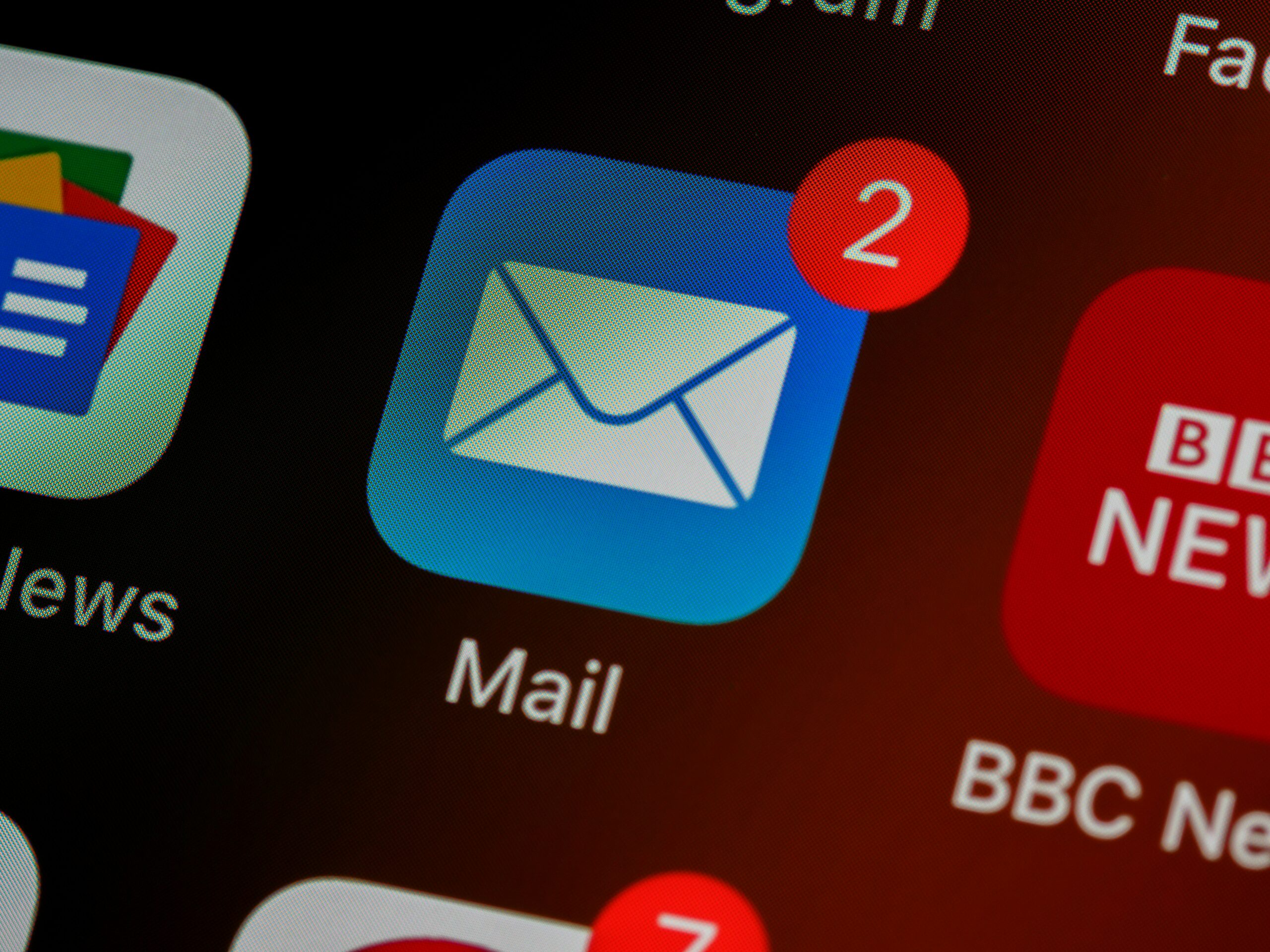The middle of the sales funnel is where interest turns into intent, and brands either keep leads engaged or lose them. This critical stage bridges awareness and conversion, making it essential to nurture with precision. From personalized content to email automation and CRM integration, every touchpoint must be data-informed and value-driven.
Nurture Machine specializes in creating automated, segmented campaigns that guide leads efficiently through this phase. With the right tools and strategy, businesses can shorten the sales cycle and boost conversions. This blog explores actionable ways to strengthen your middle funnel and unlock sustained growth.
Key Takeaways
- The middle funnel is where prospects evaluate solutions, requiring trust-building through relevant content and nurturing.
- Nurture Machine helps automate email sequences and segmentation, reducing drop-offs and maintaining engagement.
- AI-driven lead scoring and CRM integration ensure timely follow-ups and accurate prioritization.
- Sales analytics dashboards uncover bottlenecks and optimize performance in real time.
- Personalized content aligned with buyer personas enhances engagement and conversion success.
What Is the Middle of the Sales Funnel and Why Does It Matter?

The middle of the sales funnel—often called the consideration stage—is where prospects actively evaluate solutions. They already know about your brand and now seek more information, clarity, and confidence before making a decision. This stage is critical for nurturing interest, reducing objections, and preparing leads for conversion. Businesses use targeted strategies to build trust, answer questions, and highlight their value through content and engagement.
How Does the Middle Funnel Fit Into the Overall Sales Process?
The middle funnel integrates seamlessly as the bridge between generating awareness and driving conversions. It typically includes activities such as lead nurturing, targeted content delivery, and personalized email campaigns. At this stage, the prospect already recognizes your brand and is evaluating its potential. They are considering if the offered solution meets their needs and if your company can provide it better than competitors. By addressing their concerns and providing valuable resources—like webinars, ebooks, or detailed demo sessions—the middle funnel ensures that prospects progress further down the sales cycle. It is during these activities that the relationship with potential buyers is nurtured, ensuring that when they reach the decision stage, they perceive your offering as the optimal solution.
What Are the Key Goals of the Middle of the Sales Funnel?
This stage aims to deepen understanding, nurture relationships, and drive qualified leads toward the decision phase. Key efforts include delivering informative content that answers common questions and resolving hesitation through personalized engagement. Automation and segmentation enable timely, relevant follow-ups that build trust. A strong middle funnel keeps prospects engaged and filters out low-quality leads. The ultimate goal is to convert interest into intent by providing clarity, value, and support. Optimizing these efforts helps shorten the sales cycle and improve ROI.
Which Metrics Define Success in the Middle Funnel?
Success is measured using email engagement, click-through rates, and lead progression. Conversion rates from marketing-qualified to sales-qualified leads offer strong indicators of funnel health. Engagement with mid-funnel content like downloads, demo signups, and webinar attendance also signals interest. Tracking time spent on key pages helps identify high-intent leads. A reduced sales cycle length reflects strong nurturing. Segment-level performance metrics allow better targeting and resource allocation. Using automation tools ensures consistent tracking and refinement. These metrics together provide a clear picture of how well the funnel is functioning.
How Do You Implement Effective Lead Nurturing Strategies in the Middle Funnel?

Lead nurturing in the middle funnel focuses on building trust and delivering value to keep prospects engaged. This stage is about guiding potential customers through targeted content, timely follow-ups, and personalized outreach. Using data and automation, businesses can create relevant touchpoints that move leads closer to a decision. The goal is to maintain momentum and address concerns before the final conversion stage. Well-executed nurturing ensures fewer drop-offs and stronger lead quality.
What Role Does Email Marketing Automation Play in Lead Nurturing?
Email automation allows for consistent, timely outreach without requiring manual input for each lead. By creating drip campaigns tailored to behavior and interests, businesses deliver content that matches where leads are in the funnel. These automated emails can address pain points, answer questions, or offer value-add content to maintain engagement. Automation helps segment leads and prioritize high-interest prospects based on their interactions. It also enables real-time performance tracking and iterative improvements. Well-timed emails increase trust and keep your brand top of mind. This approach streamlines nurturing while improving the odds of conversion.
How Can Content Personalization Improve Lead Engagement?
Personalization tailors every interaction to the individual, which boosts relevance and engagement. Using behavioral data, businesses can craft content that speaks directly to a lead’s needs or pain points. Personalized emails, landing pages, and dynamic content help establish a stronger connection. This relevance encourages users to interact more deeply with your brand. Personalized experiences also reduce friction and improve user satisfaction. Over time, this targeted approach builds trust and keeps leads moving forward. Personalization is key to making prospects feel seen and understood. That emotional connection supports better conversion outcomes.
What Are Best Practices for Lead Scoring and Segmentation?
Lead scoring assigns value to actions like email clicks, site visits, or form fills to prioritize sales-ready leads. Use a points-based system that reflects engagement level and buyer intent. Segmentation groups leads based on demographics, behaviors, or funnel stage for more focused outreach. Update scores in real time using CRM or automation tools to reflect evolving interest. Combine data from multiple touchpoints for accurate scoring. Create distinct nurture tracks for different segments to increase relevance. Regularly review scoring criteria to improve qualification accuracy. These practices ensure efficient use of marketing and sales resources.
What Are Proven Lead Qualification Techniques for the Middle of the Funnel?

In the middle of the sales funnel, lead qualification is about identifying which prospects are most likely to convert. This requires assessing both behavioral engagement and fit with your ideal customer profile. Effective qualification filters out low-potential leads, saving time and resources. It also ensures that high-quality prospects get the attention they need. By applying structured methods and using real-time data, businesses can move qualified leads smoothly toward a sale.
How Does AI-Powered Lead Scoring Enhance Qualification?
AI-powered lead scoring automates how businesses evaluate lead readiness. It uses behavioral data, demographic inputs, and engagement trends to assign scores dynamically. These tools learn from historical outcomes and refine predictions over time. This results in more accurate prioritization and faster identification of high-potential leads. Real-time updates ensure no opportunity is missed. AI reduces bias and improves consistency in the scoring process. It also frees up teams to focus on strategy and outreach. Overall, AI-driven scoring increases the chances of converting nurtured leads efficiently.
What Are Common Lead Qualification Frameworks Like BANT?
Frameworks like BANT evaluate leads based on four key factors: budget, authority, need, and timeline. These criteria help determine whether a lead is ready to progress in the funnel. If a lead meets these conditions, they are more likely to convert. This structured method keeps the qualification process consistent and measurable. Using such frameworks also makes handoffs to sales teams more seamless. It provides clarity on lead quality and reduces guesswork. Applying standardized frameworks supports better collaboration across teams. It ensures only the most relevant leads continue down the funnel.
How Do You Identify Sales-Qualified Leads (SQLs)?
Sales-qualified leads (SQLs) are those that have shown clear buying intent and meet specific readiness criteria. Identification typically involves a combination of high engagement scores and meaningful interactions. These can include requests for demos, detailed product inquiries, or frequent content consumption. SQLs often align closely with the target customer profile. Teams use scoring thresholds and predefined behaviors to flag these leads. CRM tools track these signals and automate the transition to sales. Identifying SQLs early streamlines the handoff and increases conversion efficiency. It also ensures that sales teams prioritize the most promising opportunities.
How Can CRM Integration Streamline Lead Qualification?
CRM integration brings all lead data—demographics, interactions, and scores—into one platform. This centralized view helps teams qualify leads based on real-time activity. It enables automated updates, like flagging a lead when they reach a scoring threshold. CRMs can assign leads to sales reps instantly for faster follow-up. The system supports tailored nurturing by syncing with segmentation rules. Teams gain transparency into the qualification process and can track outcomes more clearly. CRM integration also reduces manual errors and speeds up decision-making. This results in a smoother, more responsive funnel experience.
How Can Content Marketing Drive Engagement in the Middle of the Funnel?

In the middle funnel, content marketing plays a pivotal role in sustaining interest and moving leads closer to conversion. It educates, reassures, and builds trust by offering value that aligns with the prospect’s needs. Content tailored to specific segments helps clarify solutions and demonstrates credibility. This is the stage where nurturing becomes essential, and content must answer deeper questions. A strategic content approach ensures prospects remain engaged and informed as they evaluate their options.
What Types of Middle Funnel Content Are Most Effective?
Effective middle funnel content includes detailed guides, case studies, webinars, whitepapers, and interactive assessments that cater to specific buyer personas. These content types focus on addressing common challenges, validating the credibility of your brand, and offering solutions that lead prospects toward conversion. Content that incorporates empirical data, industry statistics, and real-world examples resonates well. Such materials not only capture attention but also provide substantial value, encouraging deeper engagement.
How Do You Align Content With Buyer Personas and Funnel Stages?
Aligning content with buyer personas and funnel stages involves a deep understanding of your target audience. Segmenting your audience based on factors such as age, role, industry, and buying behaviors enables you to tailor content that addresses their unique challenges and goals. By mapping specific content types to respective stages of the funnel—awareness, consideration, and decision—you ensure that every piece of content serves a strategic purpose in the buyer’s journey. This alignment is achieved by using audience insights obtained from surveys, CRM data, and behavioral analytics to create targeted campaigns that resonate with each persona’s needs.
What Are Examples of Successful Middle Funnel Content?
Successful middle funnel content examples include whitepapers that delve into industry trends, case studies that reveal how your product resolved real-life challenges, and interactive webinars that provide live Q&A sessions with industry experts. These pieces not only provide valuable insights but also incorporate elements of social proof. Additionally, success can be seen in downloadable guides that include actionable strategies and templates, further empowering prospects to take the next step in their buyer journey.
How Does Email Marketing Automation Boost Middle Funnel Conversions?

Email marketing automation is a key tactic for nurturing leads efficiently in the middle of the funnel. It allows businesses to deliver timely, relevant content that matches the lead’s stage and interests. Automation ensures consistency in communication without overwhelming marketing teams. Well-timed emails can guide leads from curiosity to consideration and beyond. The goal is to reduce friction by keeping the brand top-of-mind. With smart segmentation and triggered workflows, engagement becomes more personalized. This targeted delivery helps improve conversions. Strategic automation creates a seamless path to the next funnel stage.
What Are Effective Email Sequences for Lead Nurturing?
Effective email sequences for lead nurturing typically begin with a welcome email that acknowledges and thanks the prospect for their interest, followed by a series of educational emails that provide valuable content such as blog posts, case studies, and webinars. A series of follow-up emails can then address common objections and provide comparisons that highlight your product’s value proposition. Ending with a strategic call-to-action that encourages direct interaction with the sales team or scheduling a demo completes the sequence. Each step is carefully constructed to build trust and guide the prospect closer to making a conversion.
How Do You Use A/B Testing to Optimize Email Campaigns?
A/B testing in email campaigns involves sending two variations of an email to a small portion of your audience to determine which version performs better. By testing different subject lines, content formats, images, and CTAs, marketers can identify the elements that drive higher engagement. The winning variation is then sent to the entire list to maximize conversion rates. This iterative process not only improves immediate campaign performance but also continually refines overall email strategies, ensuring optimal results in lead nurturing and engagement.
How Can Personalization Increase Email Engagement Rates?
Personalization increases email engagement rates by tailoring each message to the specific needs and preferences of individual leads. When emails address recipients by name, reference their past interactions, and offer content that is directly relevant, the likelihood of engagement rises significantly. Personalized emails tend to have better open and click-through rates, and they foster a sense of connection between the recipient and the brand. This targeted approach minimizes generic messaging pitfalls and contributes to a more positive customer experience, ultimately increasing the rate at which leads advance through the funnel.
What Are the Benefits of CRM Integration for Middle Funnel Strategies?

CRM integration plays a crucial role in managing and advancing leads during the middle funnel. It provides a centralized hub for storing and accessing all interactions and behavioral data. This synchronization enables both marketing and sales teams to coordinate efforts seamlessly. With real-time updates and workflow automation, follow-ups become more efficient. CRM systems enhance segmentation and personalization by leveraging detailed user profiles. They also improve lead scoring accuracy through continuous data tracking. These systems help teams prioritize high-quality leads. Overall, CRM integration boosts alignment and accelerates conversion.
How Does Data Synchronization Improve Sales and Marketing Alignment?
Data synchronization ensures that every interaction, lead behavior, and marketing action is recorded in real time across both sales and marketing teams. This alignment means that marketers can tailor campaigns based on the latest lead activity, while sales representatives can engage with prospects armed with the most recent information. The result is not only a smoother lead handoff but also a more coherent overall strategy, which in turn improves conversion rates and operational efficiency.
What Workflow Automations Can CRM Enable in the Middle Funnel?
CRM-enabled workflow automations include automated lead assignment, follow-up reminders, and dynamic segmentation, all of which contribute to a reduced response time and improved lead management. For instance, when a lead meets predefined criteria, the CRM can automatically send tailored emails, schedule calls, or update lead statuses without requiring manual intervention. Such automation leads to cost savings and an overall increase in efficiency throughout the middle funnel.
How Do Sales Analytics and Reporting Support Funnel Optimization?
Sales analytics and reporting provide actionable insights into lead behavior, conversion trends, and overall funnel performance. Detailed dashboards allow teams to identify bottlenecks, track key performance indicators, and adjust strategies in real time. Regular reporting ensures that initiatives are continually refined based on current data, facilitating a cycle of continuous improvement that enhances overall sales efficacy and return on investment.
How Do You Measure and Optimize Sales Analytics for the Middle Funnel?

Measuring and optimizing analytics in the middle funnel involves tracking performance indicators tied to engagement and lead progression. It starts with monitoring data like open rates, click-throughs, and conversion patterns. Identifying where leads slow down helps refine strategies. Dashboards centralize insights and allow for real-time responses. Testing different tactics allows teams to continuously improve effectiveness. The process ensures resources are used wisely. Optimization is ongoing and guided by trends in behavior. A data-driven approach strengthens funnel outcomes and shortens the path to conversion.
What Key Performance Indicators (KPIs) Matter Most?
The most important KPIs for the middle funnel include email open and click-through rates, conversion rates from lead to sales-qualified lead, and the duration of the sales cycle. Other critical metrics are engagement levels on content, lead scoring improvements, and the progress rate from the middle to the bottom of the funnel. These indicators give a holistic view of funnel efficiency and help in identifying areas that need improvement.
How Can Sales Dashboards Help Identify Funnel Bottlenecks?
Sales dashboards consolidate performance metrics from various channels into a single interface, allowing for quick identification of, and response to, bottlenecks within the funnel. By visualizing data trends and pinpointing where leads are stalling, teams can quickly adjust strategies or reallocate resources. Dashboards also enable a proactive approach to funnel management, ensuring that any dips in performance are addressed before they negatively impact conversions.
What Are Best Practices for Forecasting and Continuous Improvement?
Best practices for forecasting include regular data reviews, precise goal-setting based on historical performance, and leveraging predictive analytics to anticipate future trends. Continuous improvement is sustained through systematic A/B testing, frequent strategy adjustments based on real-time data, and ongoing training for marketing and sales teams. Integrating feedback loops into every stage ensures that the process remains dynamic and responsive to changes in lead behavior.
Frequently Asked Questions
How does the middle of the funnel differ from other funnel stages?
The middle of the funnel focuses on nurturing leads who have already shown initial interest. Unlike the awareness stage, which is all about attracting attention, the middle funnel involves engaging with prospects through targeted content, personalized follow-ups, and data-driven nurturing strategies. This stage is crucial because it builds trust and educates prospects, increasing the likelihood that they will become sales-qualified leads.
What tools are essential for automating lead nurturing in the middle funnel?
Essential tools include advanced marketing automation software such as HubSpot, Marketo, and Pardot, as well as integrated CRM systems like Salesforce or Zoho CRM. These platforms allow businesses to create personalized drip campaigns, monitor key engagement metrics, and synchronize data across marketing and sales teams. They also facilitate dynamic lead segmentation and workflow automation, ensuring that every lead receives timely and relevant communications.
Why is content personalization so important in the middle funnel?
Content personalization is critical because it ensures that prospects receive information that is directly relevant to their unique needs and challenges. When content is tailored, it resonates more with the target audience, leading to increased engagement and a greater likelihood of progressing further in the funnel. Personalized content builds trust and establishes the brand as a thought leader, which is vital for successful lead nurturing.
How can AI-driven lead scoring improve the qualification process?
AI-driven lead scoring improves the qualification process by continuously analyzing large volumes of data, including demographic details and behavioral signals, to determine a lead’s readiness to convert. These systems learn from historical data, refining their algorithms over time to provide predictive insights. This results in a more accurate and dynamic lead score, allowing marketing and sales teams to focus on the highest-potential leads and efficiently allocate resources.
What are the key benefits of CRM integration for middle funnel strategies?
CRM integration streamlines the management of leads by providing a centralized platform for tracking all interactions and engagement metrics. This integration enables real-time data synchronization, ensures consistent communication between marketing and sales teams, and makes it easier to measure performance through detailed analytics. Ultimately, it improves lead qualification, enhances personalization, and accelerates the sales cycle.
Conclusion
Mastering the middle funnel is key to turning warm leads into ready buyers. With tools like CRM integration, personalized email campaigns, and sales analytics, businesses can nurture trust and minimize friction. Nurture Machine empowers brands to automate this stage for maximum efficiency and precision. The result is a smoother journey for prospects and stronger ROI for your team. By continuously refining strategies based on data and behavior, the funnel becomes a reliable engine for growth. In today’s competitive landscape, a well-optimized middle funnel is no longer optional—it’s essential.






